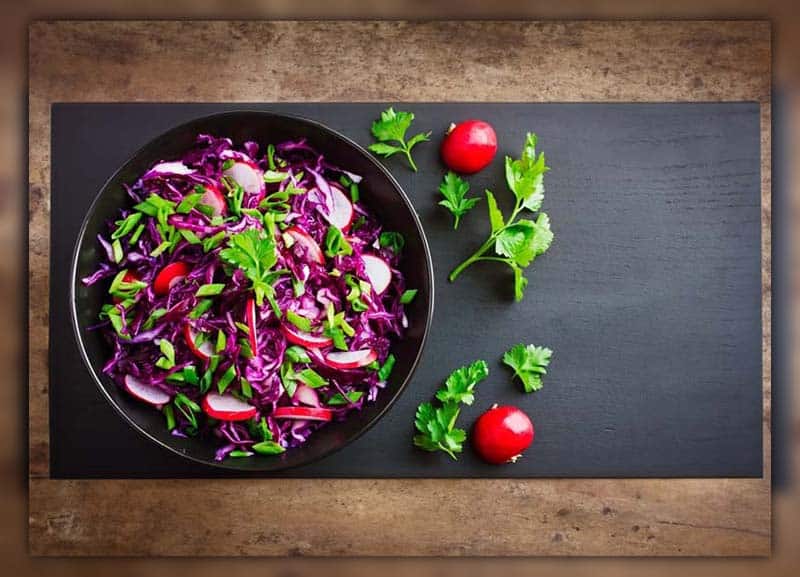The allure of the wedding attire isn’t just in its fabric but in the confidence with which it’s worn. As the date draws near, this is your sanctuary for ensuring that every fold and drape complements you, just as you’ve always imagined.
How to Lose Weight for a Wedding?

The prospect of weddings can send a flutter through even the steadiest hearts. Diving headlong into a crash diet, however, will only stoke the embers of your anxiety. Such so-called “crash” or “fad diets” typically pivot on a drastic calorie cutback, which is hardly sustainable.
Engaging in extreme caloric reduction for weight loss can usher in a slew of undesirable symptoms, largely stemming from nutritional deficits. The gamut runs from fatigue, constipation, and diarrhea to heart palpitations, not to mention alterations to your hair, nails, and skin.
Cutting Calories to Losing Weight for Wedding

Average Daily Caloric Requirements for Women:
- For weight maintenance: 2,000 to 2,400 calories
- To shed a pound per week: 1,500 to 1,900 calories
Average Daily Caloric Requirements for Men:
- For weight maintenance: 2,400 to 3,000 calories
- To shed a pound per week: around 2,000 calories
The caloric necessities of an individual are also tethered to other dynamics, such as age and the degree of physical activity. Is losing 1 kg a week good? Dipping below an appropriate caloric intake is a double-edged sword—not only jeopardizing your immediate weight loss ambitions but also potentially sowing seeds for health issues down the line.
The fallout from severe caloric deficits can ripple across a broad spectrum of health domains, impacting everything from heart health to fertility. A daily “losing weight for wedding” caloric intake plummeting below 1,000 calories is a red flag, signaling a perilous terrain for your health.
Foods should Eat to Losing Weight Fast for Wedding

Utilizing an online calorie tracker can be a straightforward method to gauge your daily caloric needs. While the figures provided aren’t precise, monitoring your food intake, portion sizes, and meal timing can promote a sense of accountability.
Engaging in these tracking practices may also mitigate mindless snacking and unveil unnoticed extra calories – for instance, the milk in your morning coffee or butter on your toast.
In addition, an online weight loss calculator can provide a ballpark figure of your daily caloric requirements. These calculators generally employ various formulas, taking into account your age, height, and current weight. Some may also factor in your target goal date (like your wedding) and the amount of weight you aim to lose. Seeing an illustration of 5 kg weight loss before and after or 8 kg weight loss before and after can serve as a motivational boost.
Beetroots – The anti-inflammatory attributes, along with the vitamins and minerals in beetroot, can combat acne and impart a healthy glow to your skin. Enjoying a tall glass of beetroot juice every other day can aid in toxin elimination and blood purification.
Pomegranates – Known for rendering skin soft and supple.
Almonds – These small nuts are a powerhouse of Vitamin E, essential for maintaining youthful skin.
Tomato – Tomatoes are rich in antioxidant lycopene, which combats skin aging and imparts a natural radiance. Its acidic nature also addresses common skin woes like dark spots, pimples, and acne effectively.
Strawberries – These berries can enhance skin complexion while diminishing the appearance of wrinkles and fine lines.
Weight Loss for Wedding Dress: Foods to Avoid

Steer clear of sweetened and processed edibles, as they can be counterproductive to your “losing weight for wedding” endeavor. Evade trans fats found in items such as cakes, pastries, biscuits, and canned juices, as they can inhibit your progress. Abstain from alcohol—its consumption can negatively impact your skin’s appearance and pose a challenge to weight loss.
Lose Weight for Wedding in 2 Weeks: Diet Meal Plan
Breakfast:
- 2 hard boiled eggs + 1 string cheese
- Omelet filled with diced bell peppers and complemented by ½ avocado
- 1 low-sugar yogurt stirred with ⅛ cup crushed nuts
And! It’s a notable fact that introducing protein to your “losing weight for wedding” breakfast regimen can significantly curb carbohydrate cravings as the day progresses.

Lunch for Losing Weight for Wedding:
- 2 cups of non-starchy vibrant vegetables, such as leafy greens, bell peppers, broccoli, and more.
- A portion of fats around 100-200 calories, for example, creamy avocado, delightful cheese, or a drizzle of olive oil, etc.
- A serving of protein, about 4-5 oz, like tender chicken, hearty tofu, or savory beef, etc.
Here’s a quick recipe:
- 1 can of tuna (protein) + 1 Tbsp mayo + a sprinkle of everything bagel seasoning. Mix these ingredients together for a delightful dip, served with 2 cups of crunchy baby carrots!

Snacks:
- 1 cup baby carrots paired with 1 to-go guacamole
- 2 hard boiled eggs + 1 string cheese (indeed, breakfast options can double-up as satisfying snacks!)
- 1-2 servings of flavorful jerky

Dinner:
- 2 cups of non-starchy fresh vegetables, like crisp lettuce, bell peppers, broccoli, etc.
- A splash of fats, around 100-200 calories, such as avocado, cheese, or a hint of olive oil, etc.
- A hearty serving of protein around 4-5 oz, options include chicken, tofu, or succulent beef, etc.

Losing Weight for Wedding Dress Fitting: Big Tips!
Home-cooked Meals: Avoid high-calorie restaurant meals by embracing the joy of home-cooking where you control the ingredients.
Less Screen, More Green: Reduce TV time; instead, explore outdoor activities that keep you both active and engaged.
Portion Control: Adapt your portion sizes to your personal caloric needs to avoid unintended weight gain.
Together in Fitness: Utilize couples gym memberships for cost-effectiveness and mutual motivation on your fitness journey.

Early Dinners: Finish dinner by 7.30 pm to give your body ample digestion time before sleep.
Daily Exercise: Commit to a 45-minute daily exercise routine; a brisk walk can be a simple start.
Mini-meal Habit: Opt for smaller, frequent meals to keep metabolism steady and hunger at bay.
Limited Cheat Days: Allow occasional cheat meals but halt them a month before the wedding for best results.
Stay Hydrated: Aim for 8-10 glasses of water daily to keep toxins at bay.
Avoid Alcohol: Skip alcohol to evade empty calories and stay on track with your fitness goals.
Stay Positive: A joyful mindset can be a powerful tool in maintaining a healthy lifestyle en route to your big day.
FAQs

When to start losing weight for wedding?
Initiating your weight loss journey a few months ahead of your wedding is a wise strategy. This timeline provides sufficient room for gradual, healthy changes, steering clear of crash diets that could potentially harm your health.
Embarking on a balanced weight loss regimen around two to three months before the big day is a prudent approach. This period could see you shedding approximately 4 kilograms, all while nurturing a sustainable and healthy lifestyle that can be carried forward into your married life.
Can I lose weight one month before wedding?
While exercise is a cornerstone of a healthy lifestyle, when it comes to shedding pounds, dietary choices often play a more decisive role in the weight loss equation. As pointed out by expert Bode, a realistic expectation is to aim for a loss between four and eight pounds within a month’s span. If your wedding is just a mere two months away, setting a lofty goal of losing 40 pounds might only brew unnecessary stress.
What should a bride do before 1 month of marriage?
Daily Skincare: Adopt a regimen of cleansing, exfoliating, toning, and moisturizing. Toning is vital to keep skin pimple-free by maintaining pH balance.
Monthly Facials: Engage in a monthly facial routine, with the last session scheduled 8 days before the wedding to allow any redness to subside, revealing radiant skin.
What happens if you lose weight and your wedding dress is too big?
Finding your wedding dress too big after weight loss is manageable. The extent of alterations relies on your weight change. With enough time and a skilled seamstress, modifying your dress to fit your new form is achievable. Ensure to plan alterations well in advance for a perfect fit on your special day.
Couple Lose Weight for Wedding
Engage in joint activities like morning walks or weekend sit-ups to foster losing weight for wedding together. Avoid comparing physical efforts; instead, explore new enjoyable exercises that help meet your mutual weight loss goals. This collaborative approach not only promotes weight loss but also enhances your bond as you approach your wedding day.
The Bottom Line
In conclusion, embarking on the journey of losing weight for wedding is not only a step towards looking fabulous on your big day but also an avenue to embrace healthier living. It might have its set of challenges, but with the right mindset and guidance, it’s an achievable endeavor. Your wedding can be the motivational landmark to foster a lasting healthy lifestyle.
Here at Bodyfitnt, we are committed to providing you with the necessary tools, tips, and motivation to make this journey a successful and enjoyable one.

Born on July 26, 1960, Professor Tim Olds is a leading authority in the field of health sciences, focusing on exercise science, nutrition, and well-being. As the Bradley Distinguished Professor at the University of South Australia, his research offers pivotal insights into the effects of physical activity, diet, and lifestyle on health outcomes for both men and women.
Having completed two PhDs, one in French Studies and the other in exercise science, Professor Olds has uniquely blended his academic background to explore the multifaceted connections between human behavior, physical fitness, and nutrition. His work in mathematical modeling of cycling performance, anthropometry, and trends in fitness and fatness has informed strategies for weight management and healthy living.
Professor Olds served as the Project Director for the Australian National Nutrition and Physical Activity Survey, examining how diet and physical activity influence health on a national scale. His work on the ADAPT Project, focusing on 3D anthropometry, further showcased his innovative approach to understanding human physicality.
With numerous influential publications, Professor Olds has contributed substantially to the public’s understanding of diet, weight loss, and personalized fitness strategies. His findings have been instrumental in shaping health policies and behavioral change programs aimed at improving individual and community wellness.
From exploring women’s health concerns to understanding men’s fitness needs, Professor Olds’s research transcends gender barriers and offers a comprehensive view of the role of exercise and nutrition in enhancing life quality. His enduring commitment to health education and advocacy continues to inspire people to make informed decisions for a balanced and healthy life.
Professor Tim Olds’s trailblazing work stands as a vital resource for anyone interested in embracing a healthier lifestyle, understanding the science of physical activity, or pursuing effective strategies for diet and weight loss. His academic excellence and practical wisdom make him an essential voice in the ongoing conversation about health and well-being in the modern world.
PUBLISHED ARTICLES
- Olds, T. (2012). Evidence for a Sugars-to-Mental Health Pipeline. Atherosclerosis Supplements, 13(4), 29-30.
- Olds, T., Maher, C., & Zumin, S. (2011). The evolution of screen time: What’s next? Journal of Physical Activity and Health, 8(2), 236-244.
- Olds, T., Ferrar, K., Schranz, N., & Maher, C. (2013). Obese adolescents are less active than their normal‐weight peers, but wherein lies the difference? Journal of Adolescent Health, 53(6), 768-774.
- Olds, T., Maher, C., & Matricciani, L. (2010). Sleep duration or bedtime? Exploring the relationship between sleep habits and weight status and activity patterns. Sleep, 33(12), 1576-1581.
- Olds, T., Ridley, K., & Dollman, J. (2006). Screenieboppers and extreme screenies: The place of screen time in the time budgets of 10–13 year‐old Australian children. Australian and New Zealand Journal of Public Health, 30(2), 137-142.
These published articles reflect Professor Tim Olds’ contributions to various aspects of physical activity, sedentary behavior, and health-related research. They provide insights into the intricate relationship between lifestyle choices and health outcomes

